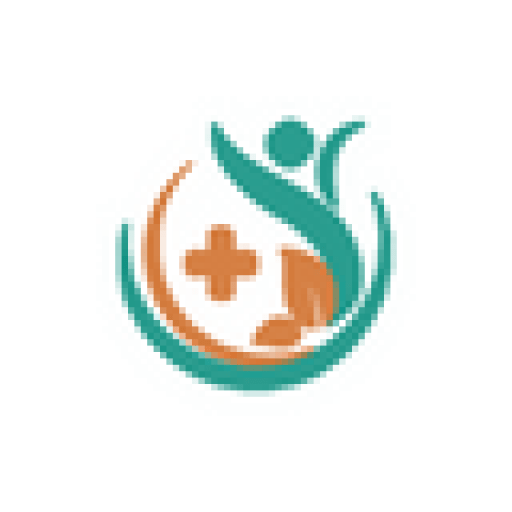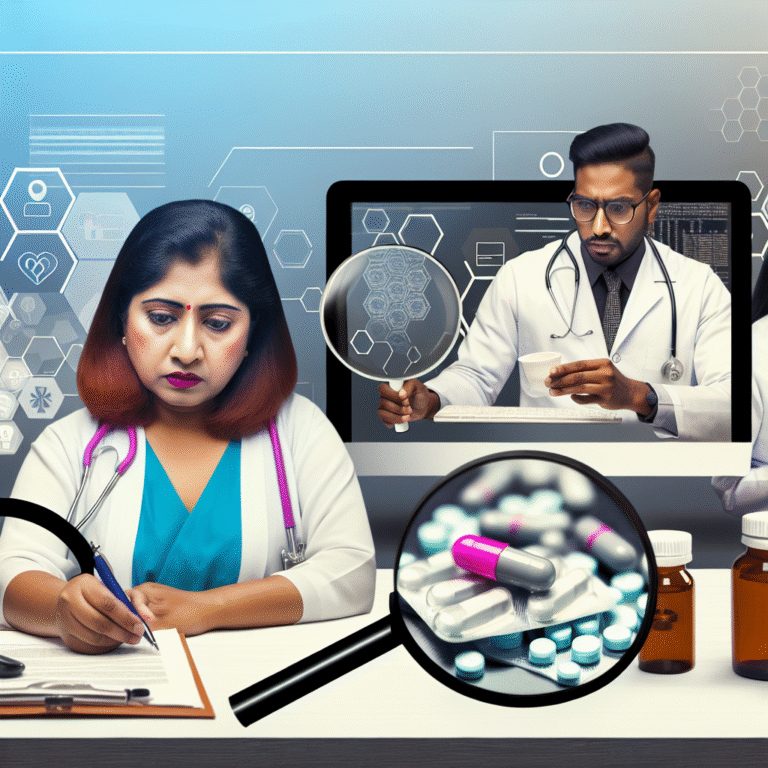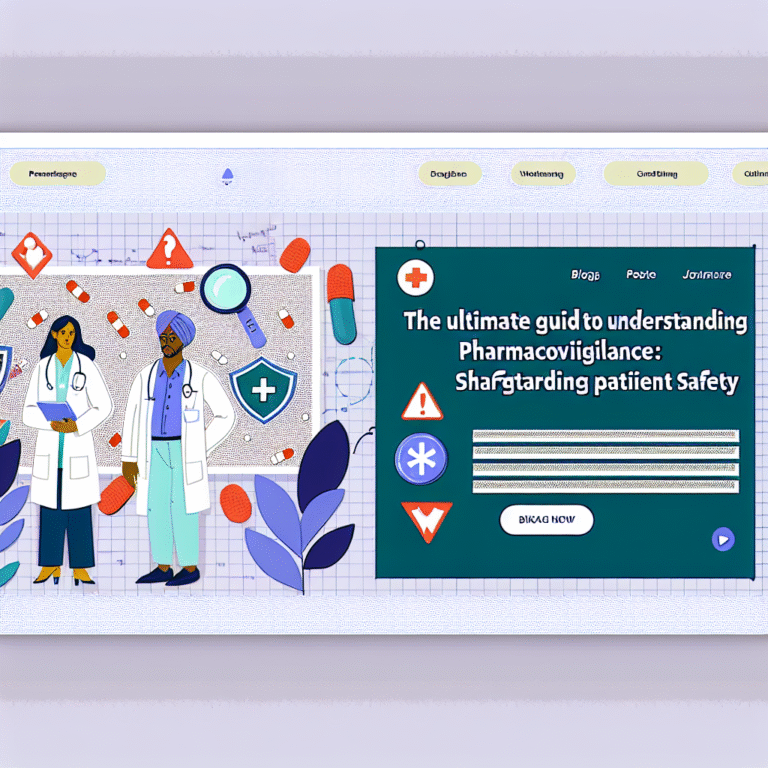The Importance of Pharmacovigilance: How to Keep Patients Safe from Adverse Drug Reactions
The Importance of Pharmacovigilance: Keeping Patients Safe from Bad Drug Reactions
Introduction
Pharmacovigilance is super important in healthcare because it keeps patients safe by checking how medicines are used. It involves watching out for and understanding bad reactions to medicines. These reactions are things that happen that we don’t want or that can be harmful after taking medicine. Even medicines that are checked and approved can have risks. Pharmacovigilance tries to make these risks smaller and helps patients feel better.
Understanding Pharmacovigilance
Pharmacovigilance started a long time ago, especially after the thalidomide tragedy in the 1950s and 1960s. This medicine for morning sickness caused bad birth problems, which helped people realize how important medicine safety is. Now, pharmacovigilance works to make patient care better and safer and to find out if there are problems with medicines. Groups like the FDA and the EMA make sure the rules are followed. They collect and look at data to keep patients safe.
Types of Adverse Drug Reactions
It is important to know about the different types of bad drug reactions so we can handle them well. There are six types:
1. Type A (Augmented) reactions: These are expected and happen when the dose is high, like low blood pressure from medicine to lower blood pressure.
2. Type B (Bizarre) reactions: These are not common and can’t be predicted, like a severe allergy to penicillin.
3. Type C (Chronic) reactions: These happen after using medicine for a long time, like bone problems from using steroids too long.
4. Type D (Delayed) reactions: These show up later, like cancer from some cancer-treating drugs.
5. Type E (End of use/rebound) reactions: These happen when stopping a medicine, like getting withdrawal symptoms.
6. Type F (Failure of therapy) reactions: When a medicine doesn’t work like it’s supposed to.
The Pharmacovigilance Process
The process for making sure drugs are safe includes:
1. Collecting data: It’s important to gather data from different places like reports, health records, and trials.
2. Analyzing data and signal detection: Looking at this data helps find new risks with medicines.
3. Risk assessment and management: Checking the risks and benefits of a medicine and managing risks to keep patients safe.
4. Communication and feedback: It’s important to have ways to tell doctors and patients about risks and let rules be followed.
Challenges in Pharmacovigilance
Pharmacovigilance still has some challenges, like:
– Not enough people report bad reactions because they don’t know or see them.
– The quality of some data can cause problems with making good choices.
– Different global rules can be a problem for international companies.
– It’s hard to mix real-world data into current systems without new methods.
Strategies to Make Pharmacovigilance Better
We need to make pharmacovigilance better:
– Making it easier for doctors and patients to report reactions can help get more data.
– Using technology, like computer tools, can help keep track of reactions better.
– Working with other countries can help make common rules for drug safety.
– Teaching more people about drug safety can spread awareness.
The Role of Healthcare Professionals
Healthcare professionals are important in pharmacovigilance:
– They need to find and report bad reactions early.
– It’s important for them to teach patients about medicine risks and how to use them.
– Choosing the right medicine or dosage can help avoid bad reactions.
Case Studies: Good Work in Pharmacovigilance
Some stories show how effective pharmacovigilance helped:
– The Vioxx removal shows how bad medicines can be found and taken off the market.
– The thalidomide story shows the need for strict safety.
– The Yellow Card Scheme in the UK is one example of a good reporting system for reactions.
The Future of Pharmacovigilance
New things are coming for pharmacovigilance:
– New tools, like big data and personalized medicine, can make monitoring better.
– AI and machine learning can help find risks and predict problems more effectively.
Conclusion
Pharmacovigilance is key in healthcare to ensure drug safety and help patients feel better. By keeping an eye on bad drug reactions, we can keep patients safe. Everybody, including doctors, patients, and regulators, needs to work together to make sure medicines are used safely.
Call to Action
Let’s join groups that promote drug safety and make pharmacovigilance better. Be active in reporting and learning to keep medicines safe for everyone.
References
For more information, you can read:
– The World Health Organization (WHO) guidance on pharmacovigilance
– European Medicines Agency (EMA) rules about pharmacovigilance
– The FDA’s MedWatch program for reporting bad reactions and events





